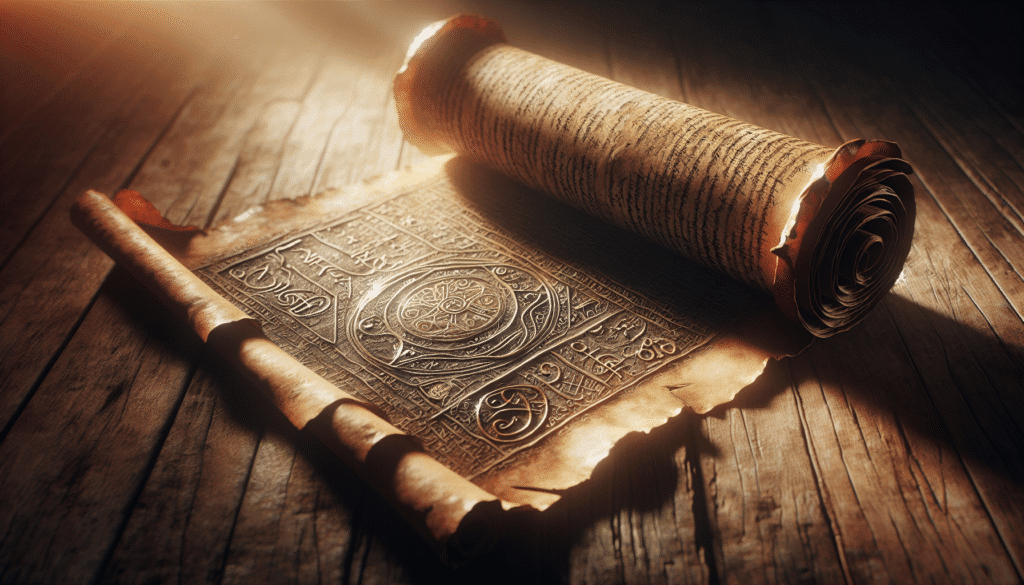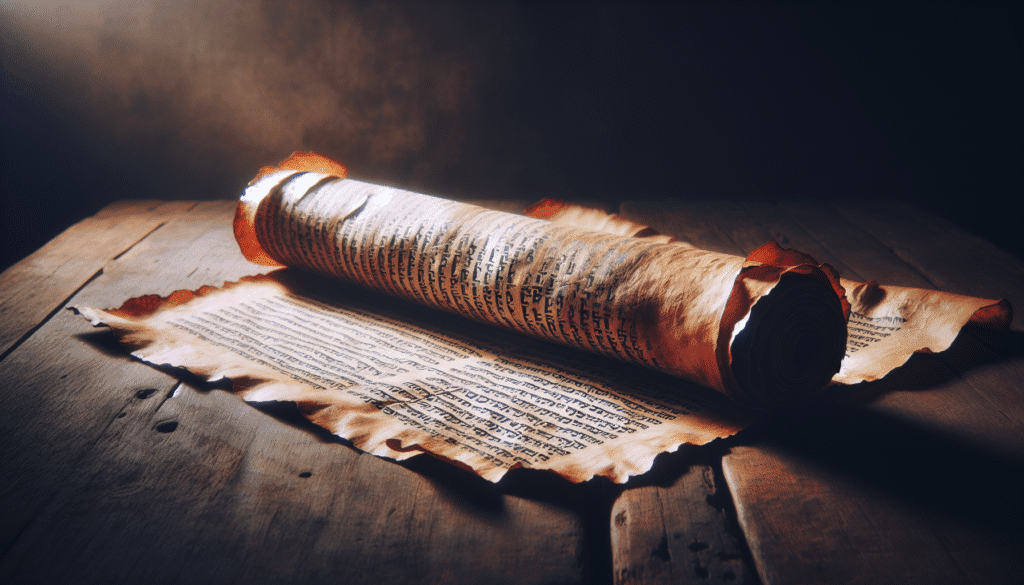Have you ever wondered about the link between ancient texts and our modern understanding of the Bible? Many people ask, “Do the Dead Sea Scrolls include biblical texts?” This question opens the door to a fascinating exploration of historical writings and their impact on biblical scholarship today. As of 2025, this topic holds immense significance, not just for theologians but also for anyone interested in ancient history, archeology, and religious studies.
TL;DR
The Dead Sea Scrolls are a collection of Jewish texts discovered near the Dead Sea that date back to the Second Temple period (around the third century BCE to the first century CE). These scrolls contain portions of the Hebrew Bible, as well as non-biblical texts, making them a critical resource for understanding the history and development of biblical manuscripts. They offer insights into Jewish life and beliefs before the fall of the Second Temple and have significantly impacted modern biblical scholarship.

The Dead Sea Scrolls: An Introduction
The Dead Sea Scrolls are considered one of the most significant archaeological discoveries of the 20th century. Found in the Qumran Caves near the Dead Sea between 1947 and 1956, these ancient manuscripts revolutionized our understanding of the Hebrew Bible and Jewish history.
What Are the Dead Sea Scrolls?
To put it simply, the Dead Sea Scrolls consist of approximately 900 documents, including texts from the Hebrew Bible, apocryphal manuscripts, and sectarian writings. Unearthed primarily in eleven caves, these scrolls have offered scholars a glimpse into the religious practices and societal norms of the Essenes, a Jewish sect believed to have inhabited the area during that time.
Historical Context and Discovery
The scrolls date back to a turbulent period in Jewish history, around the Second Temple era, which makes them all the more intriguing. From Isaiah to Genesis, these scrolls contain some of the oldest known copies of biblical manuscripts, dating from the third century BCE to the first century CE. Their discovery is credited to a Bedouin shepherd, who stumbled upon the initial cave by accident while looking for a lost goat. This serendipitous find led to years of excavation and research, shedding light on many centuries-old mysteries.
Deciphering Biblical Texts Within the Scrolls
The scrolls represent a treasure trove for biblical scholars, providing profound insights into early biblical texts and their variations.
Which Biblical Texts Are Included?
Among the scrolls, scholars have identified fragments from every book of the Hebrew Bible, except the Book of Esther. Notably, the scroll of Isaiah is almost entirely complete and remarkably similar to the Masoretic Text, the authoritative Hebrew Bible text for Jewish people today.
Textual Variants and Insights
The scrolls have revealed numerous textual variants, some of which challenge the traditional readings of certain biblical passages. These differences have prompted scholars to re-evaluate how biblical texts were transmitted over generations. For instance, comparisons with later texts like the Codex Sinaiticus show both the consistency and evolution of scripture through time.
Impact on Modern Biblical Scholarship
The differences and similarities found in these texts have had a dramatic impact on biblical scholarship. They provide a benchmark for understanding how the texts might have changed and solidified over centuries, offering a clearer picture of the Bible’s compilation.

The Non-Biblical Manuscripts: Their Role and Significance
While the biblical texts often steal the spotlight, the non-biblical manuscripts among the Dead Sea Scrolls are equally important.
Sectarian Texts
Among these non-biblical works are the sectarian manuscripts, which include rules, hymns, and commentaries related to the sect that lived by the Dead Sea. The Community Rule, for example, outlines the regulations and beliefs of the inhabitants of Qumran, believed to be the Essenes.
Apocryphal and Pseudepigraphal Texts
The scrolls also include apocryphal texts that are not part of the canonical Hebrew Bible, such as the Book of Enoch and the Book of Jubilees. These writings provide insight into the religious diversity and theological debates present in Jewish communities during the Second Temple period.
Scholarly Analysis and Interpretation
These non-biblical scrolls allow scholars to explore theological ideas and religious practices not explicitly documented in the Bible. They offer additional context and understanding of the spiritual life and religious thought processes that were prevalent at the time.
Why the Dead Sea Scrolls Matter Today
These texts have had a lasting impact on both religious and secular fields.
Bridging Past and Present
The Dead Sea Scrolls serve as a bridge connecting ancient religious practices with contemporary beliefs. They offer a snapshot of a pivotal time in Jewish history and provide a reference point for how religious texts and beliefs have evolved.
Enhancements to Religious and Historical Studies
For historians and theologians, the scrolls provide an invaluable resource. They enhance our understanding of Jewish history, biblical transmission, and the diversity of religious thought within early Judaism. In religious circles, these texts have offered insights into early interpretations and practices that continue to influence theological discussions today.
The Cultural Impact
The scrolls have also influenced art, literature, and popular culture, stirring imaginations and sparking debates on the historical roots of biblical teachings. By understanding the content and context of these manuscripts, individuals can better appreciate the complexities and nuances of religious and historical narratives.

FAQs About the Dead Sea Scrolls
Here are some commonly asked questions about the Dead Sea Scrolls to further clarify their significance and implications.
How were the Dead Sea Scrolls discovered?
The scrolls were first discovered in 1947 by a Bedouin shepherd in the Qumran Caves near the Dead Sea. Subsequent excavations over the next decade uncovered hundreds more manuscripts.
Are all the biblical texts in the Dead Sea Scrolls complete?
No, many of the biblical texts are fragmentary. However, some, like the scroll of Isaiah, are nearly complete.
What languages are the Dead Sea Scrolls written in?
The scrolls are predominantly in Hebrew, with some texts in Aramaic and a few in Greek.
Who wrote the Dead Sea Scrolls?
The authorship is widely attributed to the Essenes, a Jewish sectarian group, although this remains a subject of academic debate.
Where can I see the Dead Sea Scrolls?
Parts of the scrolls are on display in museums like the Israel Museum in Jerusalem, and they have also been digitized for online viewing.
People Also Ask
Why are the Dead Sea Scrolls significant?
The Dead Sea Scrolls are significant because they include some of the oldest known biblical manuscripts and provide insights into early Jewish culture and religious practices.
Do the Dead Sea Scrolls contradict the Bible?
The scrolls do not necessarily contradict the Bible, but they do contain textual variants that have prompted re-evaluation of some biblical passages.
What is the oldest Dead Sea Scroll?
The Great Isaiah Scroll is one of the oldest and most intact manuscripts, dating back to approximately 125 BCE.
How many caves contained the Dead Sea Scrolls?
The scrolls were found in eleven caves around the Qumran site.
What is the relationship between the Dead Sea Scrolls and Christianity?
While primarily Jewish texts, the scrolls provide context for the period around the rise of Christianity, offering insights into early Jewish beliefs that influenced early Christian thought.
In conclusion, the Dead Sea Scrolls provide a remarkable journey into the past, enhancing our understanding of biblical texts, Jewish history, and the ancient world. They remain a cornerstone for scholars and enthusiasts alike, continuing to enrich our understanding well into the future.



